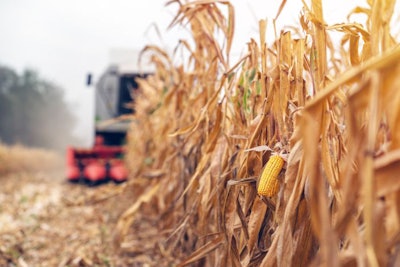
Fungal tar spot disease reported in corn fields in a dozen states, triggering sudden yield losses
A relatively new fungal disease called tar spot has re-emerged in the Midwestern U.S. in recent weeks, causing significant losses in affected fields spread across a dozen states, according to Purdue University.
Farmers whose fields have been affected have reported losses of up to 50% in recent weeks, according to Darcy Tolenko, a field crop pathologist with Purdue University Extension. The outbreak is centered in northern Indiana, where the fungus was first reported in 2015, but has spread to surrounding states and has been reported as far south as Georgia and Florida, according to monitoring by Purdue University.
Tar spot caused an average loss of 20 bushels per acre in fields affected by the outbreak in 2018, with some severely impacted fields losing up to 100 bushels per acre, Tolenko said. The disease was first confirmed in the U.S. in 2015 and appears to thrive in wet weather conditions, she said.
The fungus is particularly concerning, Tolenko said, because of how rapidly the disease progresses. Fields that were fine last week are “completely blighted” a week later, making treatment with fungicides difficult.
“The disease, once it gets started, almost has an exponential development under conducive conditions,” Tolenko said, noting that wet conditions this July follow the same pattern observed in 2018. “Especially in areas with a history of disease, if we didn’t get out early enough, we just can’t catch up.”
Fields treated with fungicides at the earliest signs of disease appear to be faring better than fields that were not treated, she added.
Tar spot produces fungal structures called stromata resembling raise, black spots on the leaves of corn, according to Purdue University. The disease leads to reduced ear size, poor kernel fill and, in some cases, causes the corn seed to germinate while still on the cob. The fungus appears to affect only corn, and spores may be wind-borne, according to the university.
Plant pathologists are still working out best practices for managing the disease, which will likely include a combination of treatment with fungicides and planting or developing more resistant varieties of corn, Talenko said. As this outbreak began in the past month, she said it is still too early to know what impact it will have on overall corn production this fall, but reports of outbreaks can be tracked on the Purdue University website.












